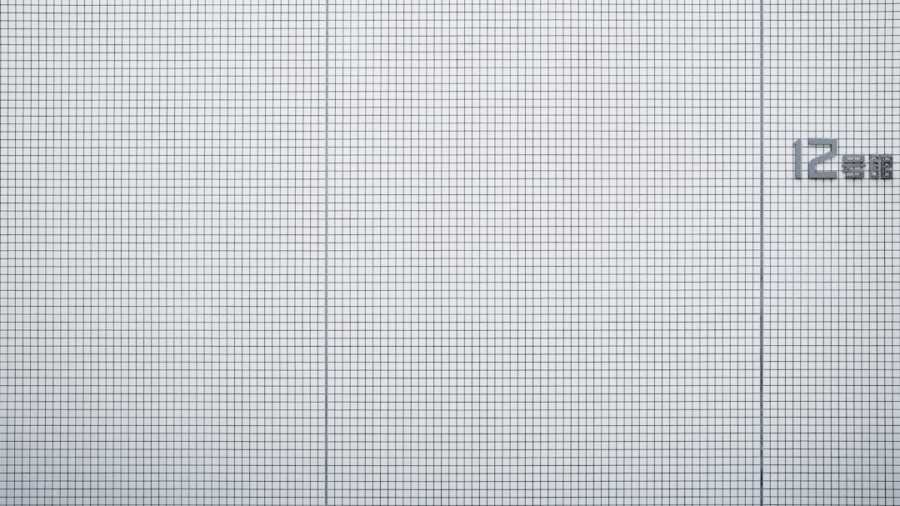The advent of artificial intelligence (AI) and the Internet of Things (IoT) has revolutionized various sectors, and the cleaning industry is no exception. AI-integrated IoT systems are transforming traditional cleaning methods into more efficient, data-driven processes. Predictive cleaning robots, which leverage these technologies, are designed to optimize cleaning schedules and enhance overall cleanliness in both residential and commercial environments.
By utilizing real-time data and advanced algorithms, these robots can anticipate cleaning needs, thereby reducing labor costs and improving service quality. The integration of AI with IoT in cleaning robots allows for a seamless flow of information between devices and systems. This connectivity enables robots to gather data from their surroundings, analyze it, and make informed decisions about when and how to clean.
For instance, a predictive cleaning robot can monitor foot traffic patterns in a commercial space and adjust its cleaning schedule accordingly. This not only ensures that high-traffic areas are cleaned more frequently but also minimizes disruption to daily activities. As a result, businesses can maintain a cleaner environment while optimizing resource allocation.
Key Takeaways
- AI-integrated IoT technology is revolutionizing the cleaning industry by enabling predictive cleaning robots to optimize cleaning schedules and efficiency.
- The use of AI-integrated IoT in cleaning robots has significantly improved cleaning efficiency, reducing the time and resources required for cleaning tasks.
- Predictive maintenance and cleaning schedules have been advanced through the integration of AI and IoT, allowing for proactive and optimized cleaning routines.
- Machine learning plays a crucial role in enabling predictive cleaning robots to learn and adapt to different environments, improving their effectiveness over time.
- While AI-integrated IoT offers numerous benefits for cleaning robots, potential challenges and limitations include data privacy concerns and ethical considerations that need to be addressed.
The Impact of AI-Integrated IoT on Cleaning Efficiency
AI-integrated IoT systems significantly enhance cleaning efficiency by enabling real-time monitoring and data analysis. Traditional cleaning methods often rely on fixed schedules that may not align with actual usage patterns or cleanliness levels.
This leads to more targeted cleaning efforts, reducing waste and ensuring that resources are utilized effectively.
For example, a predictive cleaning robot can learn from past cleaning sessions, identifying which areas require more frequent attention or which cleaning methods yield the best results.
This iterative learning process not only enhances the robot’s performance but also contributes to a cleaner environment overall. By minimizing unnecessary cleaning cycles, businesses can save on labor costs and reduce their environmental footprint through decreased water and chemical usage.
Advancements in Predictive Maintenance and Cleaning Schedules

One of the most significant advancements in AI-integrated IoT for predictive cleaning robots is the development of predictive maintenance capabilities. These systems can monitor the health of the robot itself, identifying potential issues before they lead to breakdowns or malfunctions. For instance, sensors can track the wear and tear on brushes or filters, alerting operators when maintenance is required.
This proactive approach minimizes downtime and extends the lifespan of the equipment, ultimately leading to cost savings for businesses. In addition to predictive maintenance, AI-integrated IoT systems enable dynamic cleaning schedules that adapt to changing conditions. For example, in a busy office environment, a predictive cleaning robot can adjust its cleaning frequency based on real-time data about employee presence or scheduled events.
If a large meeting is taking place, the robot can prioritize cleaning in that area before the event begins. This flexibility ensures that cleaning efforts are aligned with actual needs, enhancing both efficiency and effectiveness.
The Role of Machine Learning in Predictive Cleaning Robots
Machine learning plays a pivotal role in the functionality of predictive cleaning robots. By employing algorithms that allow these robots to learn from their experiences, they can improve their performance over time. For instance, machine learning enables robots to recognize different types of surfaces and adjust their cleaning techniques accordingly.
A robot might learn that hardwood floors require different care than carpets, allowing it to optimize its approach based on the specific environment it is operating in. Furthermore, machine learning algorithms can analyze vast amounts of data collected from various sensors to identify patterns and trends in cleanliness levels. This capability allows predictive cleaning robots to forecast when certain areas will need attention based on historical data.
For example, if a particular hallway tends to accumulate dirt more quickly during rainy seasons, the robot can adjust its schedule to clean that area more frequently during those times. This level of adaptability not only enhances cleaning efficiency but also ensures that environments remain hygienic and welcoming.
Potential Challenges and Limitations of AI-Integrated IoT for Cleaning Robots
Despite the numerous advantages offered by AI-integrated IoT for predictive cleaning robots, several challenges and limitations must be addressed. One significant concern is the initial investment required for implementing these advanced systems. While the long-term benefits may outweigh the costs, many businesses may hesitate to adopt such technology due to budget constraints or uncertainty about return on investment.
Additionally, integrating these systems into existing infrastructure can pose technical challenges that require specialized knowledge and resources. Another limitation is the reliance on data quality and availability. Predictive cleaning robots depend heavily on accurate data from sensors and cameras to make informed decisions.
If these devices are not calibrated correctly or if they encounter obstacles that obstruct their view, the effectiveness of the robot may be compromised. Furthermore, issues related to data privacy and security arise as these systems collect sensitive information about users’ habits and preferences. Ensuring robust cybersecurity measures are in place is essential to protect this data from potential breaches.
The Future of AI-Integrated IoT for Predictive Cleaning Robots in Smart Homes and Businesses

The future of AI-integrated IoT for predictive cleaning robots appears promising as technology continues to evolve. In smart homes, these robots will likely become increasingly integrated with other smart devices, creating a cohesive ecosystem that enhances overall home management. For instance, a predictive cleaning robot could communicate with smart thermostats or lighting systems to optimize its cleaning schedule based on when residents are home or away.
This level of integration will not only improve convenience but also contribute to energy efficiency. In commercial settings, businesses are expected to adopt AI-integrated IoT solutions at an accelerated pace as they seek to enhance operational efficiency and reduce costs. The rise of smart buildings equipped with advanced sensors will provide predictive cleaning robots with even more data to work with, allowing them to refine their cleaning strategies further.
As organizations prioritize cleanliness in response to heightened health concerns, the demand for such technology will likely increase, driving innovation and development in this field.
The Ethical and Privacy Considerations of AI-Integrated IoT for Cleaning Robots
As with any technology that collects data about individuals and their environments, ethical and privacy considerations are paramount when discussing AI-integrated IoT for predictive cleaning robots. The collection of data regarding user habits raises questions about consent and transparency. Users must be informed about what data is being collected, how it will be used, and who has access to it.
Ensuring that users have control over their data is essential for building trust in these technologies. Moreover, there is a risk of surveillance creep as these robots become more integrated into daily life. The potential for misuse of collected data exists if proper safeguards are not established.
Companies must implement stringent data protection measures to prevent unauthorized access or exploitation of sensitive information. Additionally, ethical considerations surrounding job displacement due to automation must be addressed; while predictive cleaning robots can enhance efficiency, they may also lead to reduced employment opportunities in certain sectors.
The Potential Benefits and Risks of AI-Integrated IoT for Predictive Cleaning Robots
AI-integrated IoT for predictive cleaning robots presents a transformative opportunity for both residential and commercial spaces by enhancing efficiency and cleanliness through advanced technology. The ability to analyze real-time data allows these robots to adapt their operations dynamically, ensuring that resources are allocated effectively while maintaining high standards of hygiene. However, as with any technological advancement, there are inherent risks associated with privacy concerns and potential job displacement.
As we move forward into an increasingly automated future, it is crucial for stakeholders—ranging from manufacturers to end-users—to engage in discussions about ethical practices and responsible implementation of these technologies. Balancing innovation with ethical considerations will be key in harnessing the full potential of AI-integrated IoT for predictive cleaning robots while mitigating associated risks. The journey ahead promises exciting developments that could redefine cleanliness standards across various environments while fostering a more efficient use of resources.
In the rapidly evolving landscape of AI-integrated IoT, predictive cleaning robots are set to revolutionize the way we approach maintenance and cleanliness in various environments. These advanced robots leverage AI to anticipate cleaning needs, optimizing efficiency and resource management. For those interested in exploring the broader technological advancements that complement these innovations, the article on marketing technologies for 2023 provides valuable insights. It discusses the integration of AI in marketing, which parallels the predictive capabilities seen in cleaning robots, highlighting the transformative impact of AI across different sectors.
FAQs
What is AI-Integrated IoT for Predictive Cleaning Robots?
AI-Integrated IoT for Predictive Cleaning Robots refers to the combination of artificial intelligence (AI) and the Internet of Things (IoT) technology in cleaning robots to enable them to predict and adapt to cleaning needs autonomously.
How does AI-Integrated IoT work in Predictive Cleaning Robots?
AI-Integrated IoT in Predictive Cleaning Robots involves the use of AI algorithms to analyze data from IoT sensors and devices to make real-time decisions about cleaning tasks. This allows the robots to adapt to changing environments and optimize their cleaning processes.
What are the benefits of AI-Integrated IoT for Predictive Cleaning Robots?
The benefits of AI-Integrated IoT for Predictive Cleaning Robots include improved efficiency and effectiveness in cleaning tasks, reduced human intervention, predictive maintenance, and the ability to adapt to different cleaning requirements in various environments.
What are the potential applications of AI-Integrated IoT for Predictive Cleaning Robots?
AI-Integrated IoT for Predictive Cleaning Robots can be applied in various settings such as commercial and industrial facilities, healthcare facilities, hospitality industry, and smart homes to automate and optimize cleaning processes.
What are the challenges of implementing AI-Integrated IoT for Predictive Cleaning Robots?
Challenges in implementing AI-Integrated IoT for Predictive Cleaning Robots include data privacy and security concerns, interoperability of IoT devices, the need for advanced AI algorithms, and the potential impact on the workforce in the cleaning industry.

